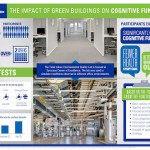Facility management: drones prepare to take flight
Drones are becoming accepted as a tool to use in facility management: See how the new flying robots could help facility management and what the rules are for using drones.
Drone technology offers a host of potential benefits to facilities and maintenance managers looking for new technologies and tools that can enable them to keep a close eye on the condition and performance of their commercial facilities.
Drones, or unmanned aerial vehicles (UAV), or remotely piloted aircraft (RPAs) give views of facilities materials and components that were not previously available. Consulting engineers now offer drone consulting services for everything from facade and roof inspections to security surveillance.
However building managers can cut out the middle man and get drones to work for them.
Facilities managers considering the use of drones to support their maintenance and engineering activities will need to address a number of questions and challenges in order to maximize the investment in UAV technology.
Key considerations for making decisions that benefit both facilities and the bottom line are:
1. Identify the most common and beneficial facility applications for RPA technology
2. Understand regulations governing the use of drones
3. Choose a drone vendor who can provide advice and guidance on how to use the RPA to address facility needs
4. Turn results of drone data into tangible benefits for the organisation.
How can drones help facility management staff do their job?
Think about that top section of the building facade that’s just out of reach of a ladder and is starting to crack. Or that huge ageing roof that has started leaking and has not been closely inspected for years.
Every facility manager wrestles with such areas. They are hard to access, show signs of major problems, and have not been properly addressed in years, if ever.
Technicians cannot reach them safely, and aerial work platforms and scaffolding are expensive and time-consuming to set up and take down, not to mention potentially dangerous to workers.
Enter the drone.
As new applications expand daily for commercial drones — or (UAVs) — managers are considering ways drones might be able to expand the reach and capabilities of their departments and technicians. They have only just begun.
Drones: Benefits to Facility Management
The benefits haven’t really been outlined to facility managers. I think the possibilities are endless. Furthermore, the drone vendors don’t really understand the particular needs of facility managers. Soon, as more communication happens, things will start to improve, and some new software services might help facility managers even more. It’s such a new market, anything could happen.
It is only a matter of time until managers begin giving drones more serious consideration, given the technology’s potential benefits.
Commercial drones challenge managers to understand possible applications by seeing their facilities differently.
An important question is, ‘Do you have a management problem in an area that is difficult to reach that needs a lift to reach but that just needs periodic visual inspection? If that’s the case, indoors or outdoors, drones are an option to consider.
In most cases, inspection services are what will jump to mind first, such as façade and roof inspections. But all hard-to-reach areas should be considered, including HVAC, vents and antennae. Essentially, anywhere it’s hard to access or where a lift or scaffolding is used should be evaluated for use of a drone.
Drones can can be flown indoors, which are typically not subject to regulations. Depending on the indoor space configuration, a drone may be the only practical method of getting up close or into to a trouble spot.
In addition to problem areas of facilities, managers also can review their front-line technicians’ daily activities to determine whether and how a drone’s capabilities could extend technicians’ reach.
Another obvious benefit is that you can have your drone record video, and you can store that video. As long as you automate the pattern or the process, you can repeat the flight. Then you have side-by-side results over a period of time. This can be very useful in monitoring the changes in a facade.
Another aspect that jumps to mind of drones in facility management would lie in security. Similar to its reconnaissance role in the military, a single drone could provide its operator with an aerial view of an entire facility. Depending on the model, a drone could also outperform traditional CCTV cameras that are restricted to a static position. If the drone operator spots something on the monitor, they can bring the drone down from above to check blind spots.
In short, drones are useful because they:
– Minimize risk in facility inspections
– Pinpoint heat loss in energy audits
– Evaluate and monitor remote sites
– Prevent accidents and injuries
CASA Rules for drone operation
Drones are novel, and there are evolving regulatory requirements from the Civil Aviation Safety Authority (CASA), so it’s not surprising that managers in commercial facilities have moved slowly to investigate possible applications.













